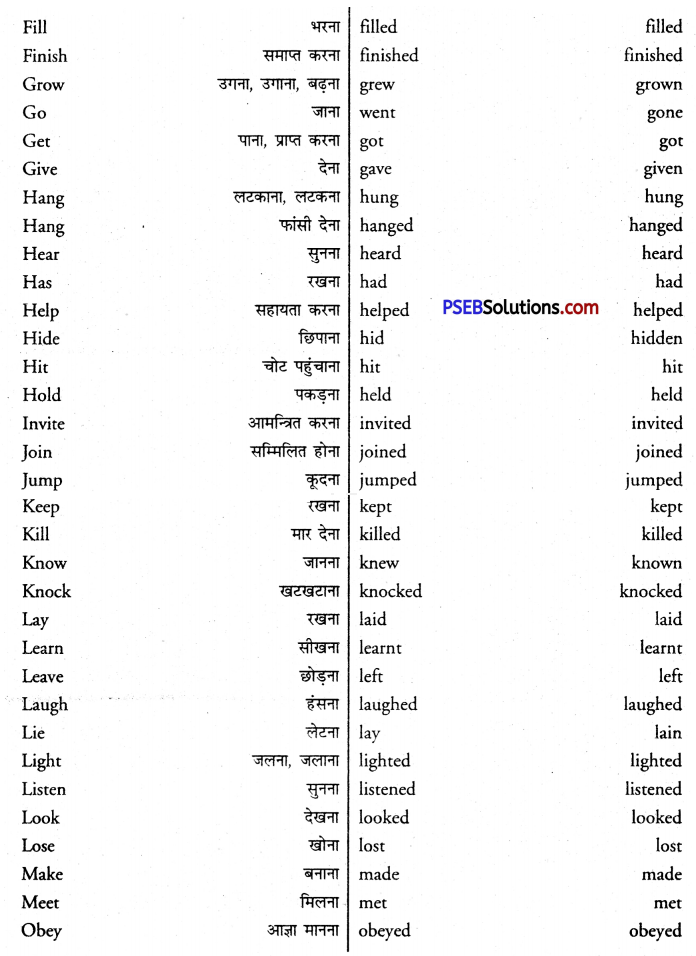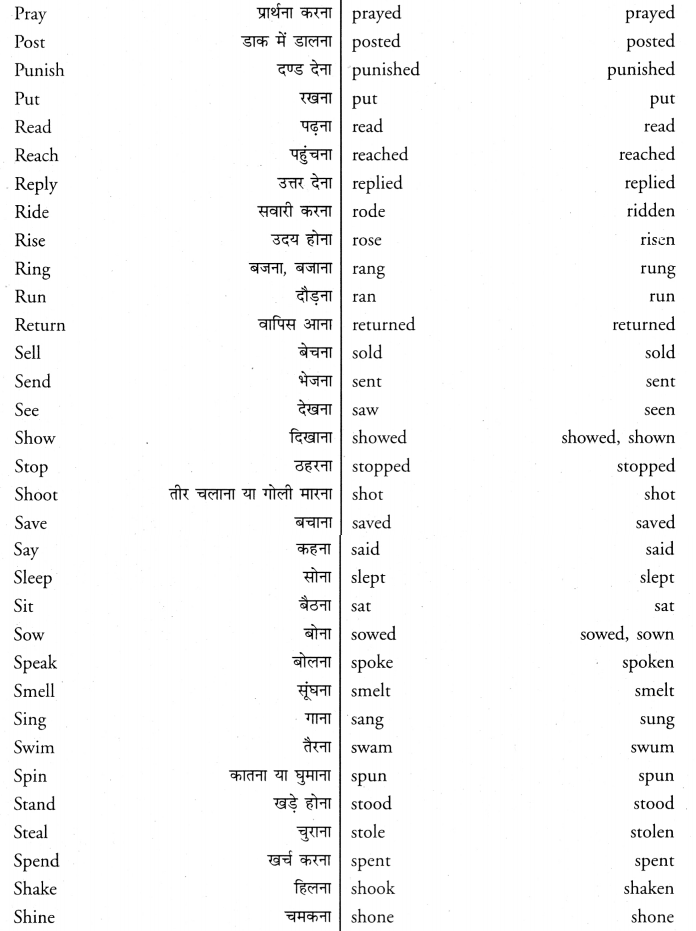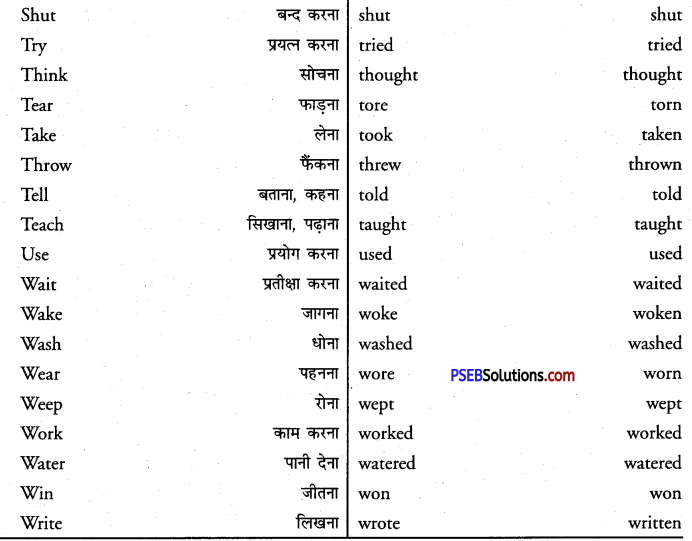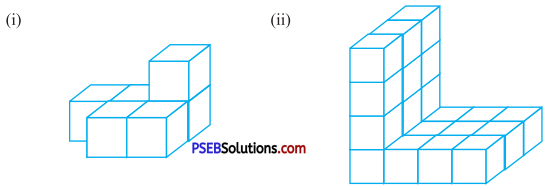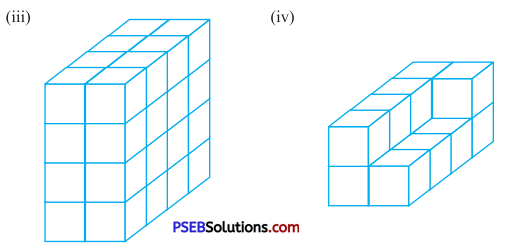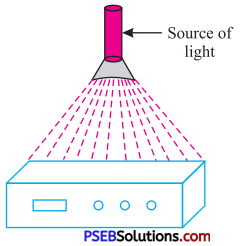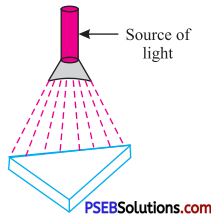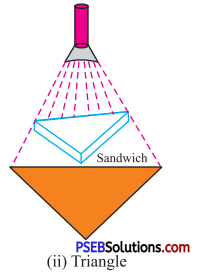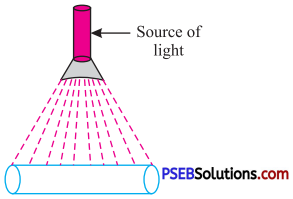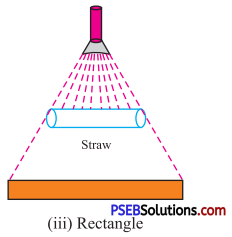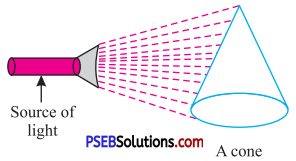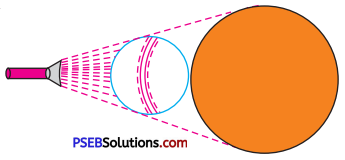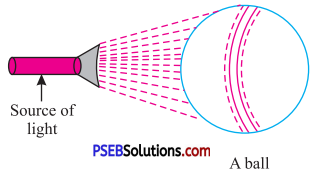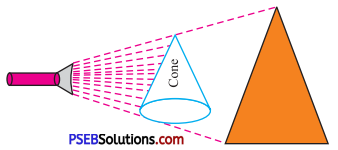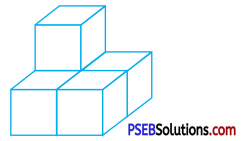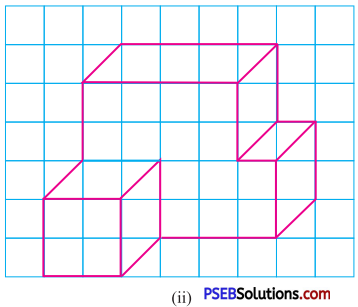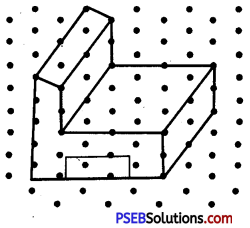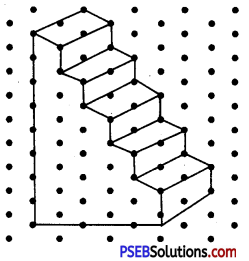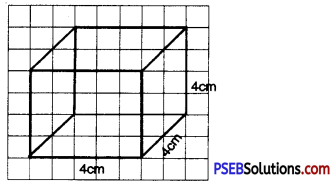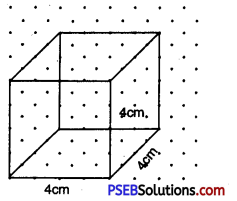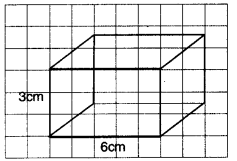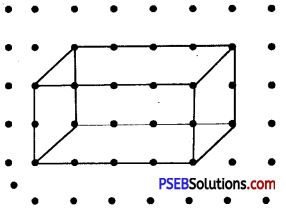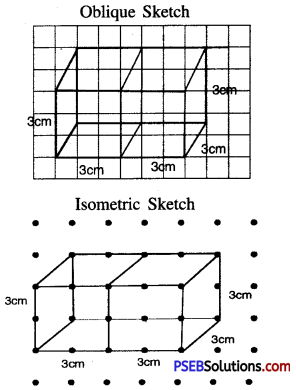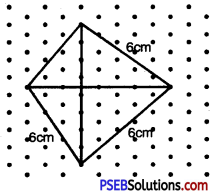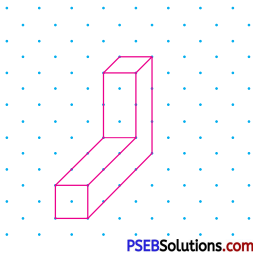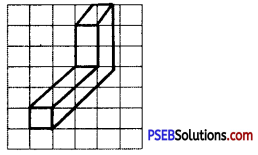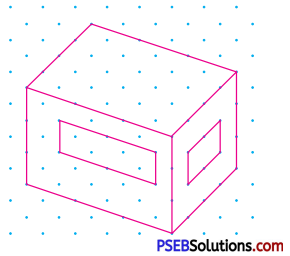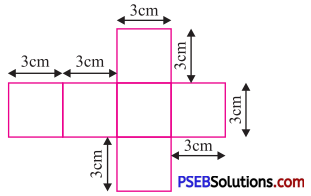Punjab State Board PSEB 8th Class English Book Solutions English Grammar Adjective and Degree Exercise Questions and Answers, Notes.
PSEB 8th Class English Grammar Adjective and Degree
An Adjective is a word which qualifies or adds something to the meaning of a Noun or a Pronoun.
जो शब्द किसी Noun अथवा Pronoun की विशेषता प्रकट करता है उसे Adjective (विशेषण) कहते हैं। Adjective प्रायः Noun के साथ प्रयोग होता है। यह या तो किसी व्यक्ति, पशु अथवा स्थान का वर्णन करता है या किसी संख्या अथवा मात्रा का बोध कराता है; जैसे-
- Many years ago there was a miser. (संख्या)
- He never ate good food. (गुण)
- He spent little money. (मात्रा)
![]()
इन वाक्यों में Many, good तथा little शब्द क्रमशः संख्या, गुण एवं मात्रा का बोध कराते हैं। अतः ये शब्द Adjectives हैं।
Adjective मुख्यतः 9 प्रकार के होते हैं-
1. Adjectives of Quality-जो विशेषण किसी व्यक्ति अथवा वस्तु के गुण या प्रकार का बोध कराते हैं, उन्हें Adjectives of Quality (गुणवाचक विशेषण) कहते हैं ; जैसे-good, fresh; bad आदि।
2. Proper Adjectives_Proper Nouns से बनने वाले विशेषण Proper Adjectives (व्यक्तिवाचक विशेषण) कहलाते हैं; जैसे-Indian, Chinese.
3. Adjectives of Quantity-जो विशेषण किसी वस्तु की मात्रा का बोध कराते हैं उन्हें Adjectives of Quantity (परिमाणवाचक विशेषण) कहते हैं। इस प्रकार के Adjective प्रायः कितने (How much) शब्द का उत्तर देते हैं; जैसे-some, no, great.
4. Adjectives of Number-जो विशेषण संख्या अथवा क्रम का बोध कराते हैं, उन्हें Adjectives of Number (संख्यावाचक विशेषण) कहते हैं; जैसे-two, all आदि।
5. Distributive Adjectives-जो विशेषण किसी विशेष वर्ग के व्यक्ति अथवा वस्तु को अलग-अलग प्रकट करें, उन्हें Distributive Adjectives (विभाजन विशेषण) कहते हैं; जैसे-each, either, every आदि।
6. Demonstrative Adjectives-जो विशेषण सम्बन्धित व्यक्ति अथवा वस्तु की ओर संकेत करते हैं, उन्हें Demonstrative Adjectives (संकेतवाचक विशेषण) कहते हैं; जैसे-this, that आदि।
7. Interrogative Adjectives -जो विशेषण प्रश्न पूछने के लिए प्रयोग किया जाता है, उसे Interrogative Adjective (प्रश्नवाचक विशेषण) कहते हैं; जैसे-which, what, whose आदि।
8. Possessive Adjectives- किसी वस्तु या व्यक्ति पर अधिकार व्यक्त करने वाले विशेषण को Possessive Adjectives (सम्बन्धवाचक विशेषण) कहा जाता है; जैसे, My book, Your brother, आदि।
9. Emphasizing Adjectives- जो शब्द Possessive Adjectives पर बल देने के लिए प्रयोग किए जाते __ . हैं, वे Emphasizing Adjectives (निजवाचक विशेषण) कहलाते हैं। इसके लिए प्रायः own शब्द प्रयोग किया जाता है; जैसे,
I became my own servant.
A- Degrees of Adjectives
There are three degrees of comparison:
- Positive Degree.
- Comparative Degree.
- Superlative Degree.
B-Degrees के प्रयोग के नियम
1. Adjective (विशेषण) की पहली Degree (Positive) का प्रयोग उस समय होता है जब कोई तुलना न करनी हो या तुलना की दोनों वस्तुएं (Noun या Pronoun) एक जैसी हों। इसमें as’ का प्रयोग होता है, जैसे-
- Ram is a good boy.
- He is as strong as I.
- This book is as good as Ram’s.
2. दूसरी Degree (Comparative) का प्रयोग उस समय होता है जब दो वस्तुओं या दो व्यक्तियों की तुलना करनी हो। इसमें than’ का प्रयोग होता है; जैसे-
- He is more intelligent than his brother.
- Ram is more intelligent of the two brothers.
- This is better of the two pens.
![]()
3. तीसरी Degree (Superlative) का प्रयोग उस समय होता है जब कोई व्यक्ति या वस्तु अन्य सभी व्यक्तियों या वस्तुओं की तुलना में अच्छी हो। इसका प्रयोग एक वस्तु की दो से अधिक वस्तुओं के साथ तुलना करने में होता है; जैसे,-
- She is the most beautiful of all the sisters.
- Ram is the eldest of the four brothers.
C–Use of Some Adjectives
(Note : Adjectives are given in italics.)
1. Your elder brother will captain our team.
2. Our school is older than yours.
3. He is older than I.
4. Who is the eldest member in the family ?
5. It is the oldest temple of the area.
6. My bat is superior to yours.
7. This wood is inferior to that.
8. Is John junior to Gopal ?
9. Ishwar is senior to me.
10. There is little milk in the jug.
11. I have a little money in my pocket.
12. The little money I saved is spent.
13. He makes few mistakes.
14. He makes a few mistakes.
15. The few boys who were present in the morning have run away.
16. He has some books on American literature.
17. I have some friends here in this town.
18. Do you have any books on grammar ?
19. Have you any money?
20. I have not received any help from him.
21. I reached the school later than Shyam.
22. What is the latest score ?
23. The latest issue of this magazine is awaited.
24. Mohan narrated two tales but I found the latter more interesting.
25. The last train leaves at 11-50 at night.
26. The last batsman played extremely well.
27. We have much amount to spend on clothing.
28. Many students in our class have won prizes.
Exercises (Solved)
I. Write out the story, putting one of the adjectives from the list in each blank:
Long delightful high sour ripe warm hungry
It was a ………….. day. A fox had just entered a garden. Among the many……….. things in the garden was a vine laden with bunches of grapes. One of them was a ……..3…….. bunch which hung invitingly over the fox’s head. The very sight of it made the fox feel ……..4……… He leapt up at the grapes several times. But they were too ……..5……. for him to reach. After a ……..6…… time he decided to give up trying. He went away declaring that the grapes were ……..7…….. This is the origin of the expression ‘sour grapes’.
Hints:
1. warm
2. delightful
3. ripe
4. hungry
5. high
6. long
7. sour.
![]()
II. Fill in the blanks with the comparative or superlative degree of the adjectives given in the brackets:
1. The Taj is ……………… than any other building. (beautiful)
2. This is the ……………… book I have ever read. (good)
3. The climate of Shimla is ………………. than that of Delhi. (good)
4. Mohan is the …………….. boy in his class. (tall)
5. Hardwar is one of the ……………… places for the Hindus. (holy)
6. Ram is …………… than his sister. (intelligent)
7. Mumbai is ……………… than any other city in Maharashtra. (large)
8. This dress is ………………. than that. (costly)
9. Radha has …………….. sense than her sister. (much)
10. My table is the ……………… of all. (big)
Hints:
1. more beautiful
2. best
3. better
4. tallest
5. holiest
6. more intelligent
7. larger
8. costlier
9. more
10. biggest.
III. Put the correct word in the blank spaces:
(a) 1. He came …………….. than Sham. (later, latter)
2. The ……………… train leaves the station at 11 p.m. (last, later)
3. What is the …………….. news ? (latest, last)
4. I met Shila and Rita yesterday. The former promised to come to the party but the ………………… gave a flat refusal. (later, latter)
5. Ram is ………………… than Hari. (elder, older)
6. He is the ……………. member of the family. (eldest, oldest)
7. The ……………… brother controls the entire business. (older, elder)
8. Delhi is ………………… from Ludhiana than Ambala. (further, farther)
9. You are not going to get any ……………… help from us. (further, farther)
10. History is ……………….. difficult than Mathematics. (less, fewer)
11. ……………… boys attended the meeting this time. (less, fewer)
12. These chairs cost sixty rupees ……….. (every, each)
13. ……………….. man loves him. (every, each)
14. His days are numbered; he has ……………… hope to survive. (little, a little)
15. …………….. effort on your part will help me a lot. (little, a little)
Hints :
1. later
2. last
3. latest
4. latter
5. older
6. eldest
7. elder
8. farther
9. further
10. less
11. Fewer
12. each
13. Every
14. little
15. a little.
![]()
IV. Correct the following sentences:
1. The poors always deserve mercy.
2. The three friends helped each other.
3. Shakespeare is greater than any dramatist.
4. There were no less than fifty persons present.
5. Every of the two friends is ill.
6. Iron is more useful than any metal.
7. My hat is more superior than yours.
8. The three brothers understand each other well.
9. He is a best boy in the class.
10. The higher you go the coolest it is.
Hints:
1. The poor always deserve mercy.
2. The three friends helped one another.
3. Shakespeare is greater than any other dramatist.
4. There were no fewer than fifty persons present.
5. Each of the two friends is ill.
6. Iron is more useful than any. other metal.
7. My hat is superior to yours.
8. The three brothers understand one another well.
9. He is the best boy in the class.
10. The higher you go, the cooler it is.

